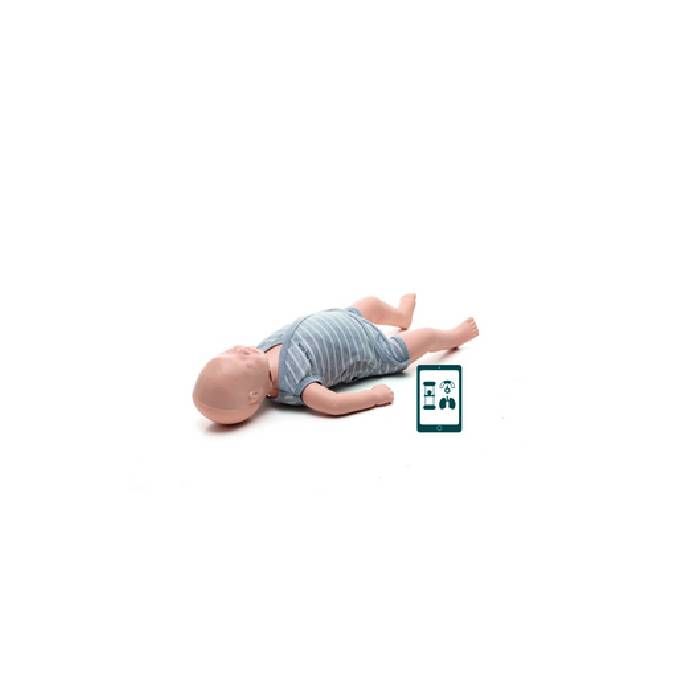Little Baby QCPR
Little Baby QCPR is a realistic and affordable BLS manikin. It improves training quality, learner engagement, and classroom efficiency.
Key Features
- Oral and nasal passages allow for realistic nose pinch required for mouth-to-nose ventilation
- Natural obstruction of the airway allows students to learn the important technique of opening the airway
- Head tilt/chin lift and jaw thrust allow students to practice all manoeuvres necessary when resuscitating a real patient
- Realistic chest movement means students can experience the proper technique required for chest compressions on infants
- Foreign-body airway obstruction feature allows the release of a foreign-body obstruction to be practised through back blows and chest-thrust techniques
- Removable and reusable faces for convenient and affordable maintenance
- Feedback on hand positioning
- See and feel the baby’s ribs
- Limbs with realistic movement
- Durable construction with realistic length and weight
- 2 AA batteries will last for months and are easily changed.
Little Baby QCPR first aid training manikin helps trainees to understand how to treat babies during a first aid training scenario. The life-like size provides a realistic proportion to how an incident would be dealt with and how the responder would adapt treatment to suit a small and delicate frame.
What's Included?
- 1 Manikin
- 1 Soft Pack
- 6 Manikin wipes
- Jumpsuit for manikin
- Soft pack carry case
More Information
For further information about this product, get in touch with a member of our team on 0161 776 7422.
| Defib Brand | Laerdal |
|---|---|
| FDA Approved | No |
| Dangerous Goods | No |
Laerdal's Baby Anne training manikin helps learners to understand how to effectively treat babies during a first aid emergency.

